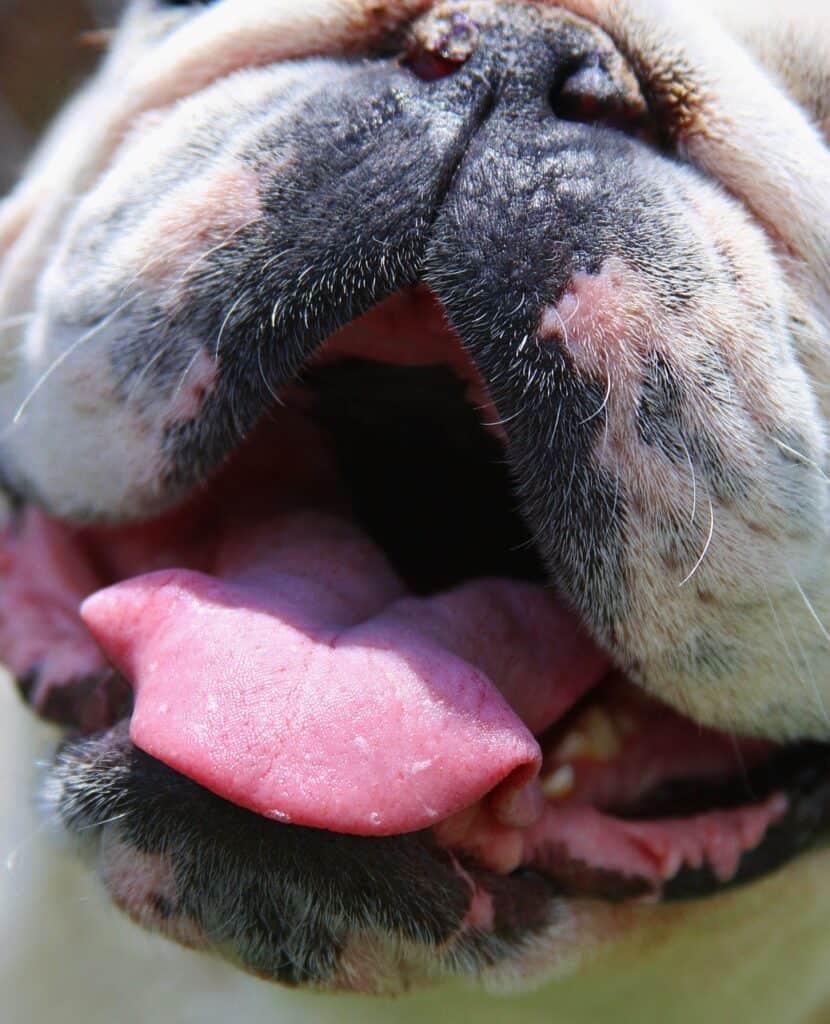How to Clean Your Dog’s Mouth: Step-by-Step Guide
Caring for your dog’s dental health is just as important as providing them with a balanced diet, regular exercise, and routine vet check-ups. Cleaning your dog’s mouth can prevent dental diseases, which are not only painful for your dog but can also lead to serious health issues if bacteria from the mouth spread to other parts of the body, like the heart or kidneys.

Here’s a helpful guide to keeping your dog’s mouth clean, why it’s essential, and when to do it or avoid it.
Why Clean Your Dog’s Mouth?
The primary reason for cleaning your dog’s mouth is to maintain their overall health and well-being. Dental problems in dogs can lead to bad breath, tooth loss, pain, and more severe health issues. Regular cleaning helps remove plaque and tartar build-up, preventing periodontal disease, which is common in dogs. Moreover, a clean mouth supports a stronger immune system by reducing the risk of harmful bacteria entering the bloodstream.
How to Clean Your Dog’s Mouth
Step 1: Preparation
- Gather Your Supplies: You’ll need a dog-specific toothbrush or a finger brush, and canine toothpaste. Never use human toothpaste, as it can be harmful to dogs.
- Choose the Right Time: Pick a calm, quiet time when your dog is relaxed, such as after a walk or play session when they’re more likely to be tired and cooperative.
Step 2: Get Your Dog Comfortable
- Introduce the Supplies: Let your dog sniff and lick the toothbrush and toothpaste to get familiar with them. This helps reduce their anxiety about new objects.
- Start Slow: Use your finger to gently rub your dog’s gums and teeth for a few days before using the brush. This helps them get used to the sensation.
Step 3: Use the Toothpaste
- Apply a Small Amount: Place a pea-sized amount of toothpaste on the toothbrush. Let your dog taste it first, as many canine toothpastes are flavored to be appealing to dogs.
Step 4: Brushing
- Lift the Lip: Gently lift your dog’s lip to expose the teeth and gums.
- Gentle Circles: With a soft touch, brush in small, gentle circles, focusing on the outside surfaces of the teeth where plaque tends to accumulate. No need to brush the inside surfaces; your dog’s tongue tends to take care of that area.
- Be Patient: If your dog resists, don’t force it. Try brushing a few teeth at a time, gradually increasing as your dog becomes more comfortable.
Step 5: Praise and Reward
- Positive Reinforcement: After brushing, even if you only managed a little, praise your dog and offer them a treat or extra playtime. This helps them associate tooth brushing with positive outcomes.
- Step 6: Consistency is Key
- Regular Routine: Aim to brush your dog’s teeth daily, but if that’s not possible, try for a few times a week. Consistency will help prevent dental diseases and make the process easier over time.
Additional Tips
Inspect the Mouth: While brushing, keep an eye out for any signs of dental issues, such as red or swollen gums, bad breath, or loose teeth. If you notice anything concerning, schedule a visit to the vet.
Consider Dental Toys and Treats: As part of your dog’s dental care routine, incorporate chew toys and dental treats designed to help clean their teeth and massage their gums.
When to Clean Your Dog’s Mouth
- Routine Cleaning: Start a dental care routine early in your dog’s life. Brushing their teeth daily is ideal, but if that’s not possible, aim for a few times a week. Use a toothbrush designed for dogs and toothpaste that’s safe for pets (never use human toothpaste, as it can be toxic to dogs).
- After Meals: While it’s not always necessary to brush right after every meal, offering a dental chew can help clean their teeth mechanically through the chewing action.
- During Grooming Sessions: Incorporate dental care into their regular grooming routine. This helps your dog associate tooth brushing with a positive experience.
When Not to Clean Your Dog’s Mouth
- If Your Dog Is Aggressive: If your dog shows signs of aggression when you attempt to clean their mouth, it’s better to seek professional help from a veterinarian or a professional dog trainer to avoid injury.
- Immediately After Eating: Avoid brushing immediately after eating, especially if your dog eats dry food, which can help clean the teeth naturally. Wait a bit to avoid any potential discomfort or resistance.
- When Your Dog is Unwell: If your dog is not feeling well, particularly if they have a mouth or dental issue, consult your vet before attempting any new dental hygiene practices.
- If You Notice Dental Problems: If you spot signs of dental problems, such as loose teeth, significant tartar build-up, swollen gums, or your dog appears to be in pain while eating, it’s time to visit the vet. Attempting to clean their mouth in such states can cause more harm than good.



